High-achieving women have a lot on their plates. Your drive and ability to get things done helps you run businesses, tackle complex challenges and keep your families running, but it also makes you susceptible to chronic negative stress. Why? As you strive for excellence (often, perfection), you also tend to over-commit, fail to focus on your own needs, and can be somewhat inflexible and overly-serious. In addition, you rarely slow down, which means your tank is often running on or close to empty.
It wasn't until I burned out that I actually became aware of how few resources existed which identified, much less discussed, the impact that occurs when stress and high-achieving women collide. The fields of medicine, performance psychology and positive psychology now offer interesting insights.
The 4 Stress Types
Dirk Hellhammer, noted stress researcher, and Doctors Stephanie McClellan and Beth Hamilton have identified four stress types that impact women. They are as follows:
1.The zero to sixty. You are generally calm, but when stress hits, you have a big response. You are extremely sensitive to stress.
2.Life observer. This is the most rare stress type marked by an extreme state where you feel like you're living in a bubble watching life pass you by.
3.Constant overdrive. Your engine is always revved. You have a hard time sitting still, often tap your feet or hands, and frequently clench or grind your teeth.
4.Dash and crash. Stress keeps you focused and running so you can be a high achiever, but once the stress is reduced or eliminated, you crash. Women who have this stress type are often burnout targets.
Your Plan of Action
Once you become aware of your stress type, you can take steps to reverse the progression of stress imbalance and find the most effective way to bring your body back into balance, or allostasis. You may notice that you're a blend of a few categories, but I suspect that you can identify one fairly dominant stress type. Here is a more detailed look at each stress type, along with several recommendations suggested by Drs. McClellan and Hamilton and me:
THE ZERO TO SIXTY
What it looks like: Your body tends to produce too little of the stress hormone cortisol. Too much or too little cortisol affects everything from how you sleep to how high or low your energy level is. Low levels of cortisol result in an overactive immune response that attacks body tissues, resulting in pain and inflammation.
•As a result of this chronic pain and inflammation, you might not feel like exercising, but exercise will help to provide some relief. Start by exercising at a slow pace, working up to moderate intensity.
•Try daily stretching to keep your muscles flexible.
•Massage to sooth pain and inflammation.
LIFE OBSERVER
What it looks like: This is the rarest stress type, which is an extreme state caused by a severe imbalance. It can be hard for you to make changes in your life, and when you are stressed, you become severely overwhelmed and withdrawn.
•Start exercising for short periods of time during the day at a very easy pace.
•Keep a daily journal to track and connect with what you're feeling both physically and emotionally.
•Increase your diet of positive emotion by writing down three good things that happened during the day with a reflection about why each good thing is important.
CONSTANT OVERDRIVE
What it looks like: You tend to be anxious, find it difficult to relax, have trouble falling asleep and are direct and to the point in your communication. You can be emotional, even explosive. The "fight or flight" response that gets activated during stress gets activated too frequently with this stress type or doesn't turn off properly. Your entire system is in overdrive.
•You have nervous energy to burn off, so work up to exercising at a hard, intense pace. Regular exercise will improve your mood and protect you from stress-induced damage to your brain.
•Relax your tense muscles with Pilates, yoga or deep breathing.
•Carry a journal with you throughout the day so you can "brain dump" what worries you.
•Lay off the caffeine -- you're already revved up!
DASH AND CRASH
What it looks like: Women with this stress type tend to be high achievers who constantly push themselves until they collapse. Your nervous system goes from being in high gear to crashing. When you are in the crash phase, you are drained and spent.
•When you go on vacation, you may need an extra day or two to recover. While others are ready to go and explore, you need to rejuvenate until your balance is restored. You might even get sick.
•When you are in the crash phase of this cycle, your body needs to recover. As a result, keep exercise to a minimum. When you're in the dash phase, you should be exercising at a moderate to high intensity.
•High cortisol levels compromise your immune system. To get a good Vitamin C boost, try this smoothie that I created: Combine in a blender 2 cups of frozen peaches (or 1 cup each of frozen peaches and mangos), ½ cup of plain Greek yogurt, a 1-2 inch piece of fresh ginger, peeled and chopped, 3 T ground flaxseed, 1 tsp cinnamon, and 1 ½ - 2 cups of orange juice. Blend until smooth.
•Examine the mindsets that drive your high-achieving thinking style. This article discusses high-achieving mindsets in greater detail.
The world needs more strong, talented women who are able to navigate the pressure that comes with being a high-achieving professional. Identifying your stress type and managing your chronic long-term stress will help you not only succeed, but also thrive, allowing you to both live and work at a sustainable pace.
________________________________________________________________________________
Paula Davis-Laack, JD, MAPP, is a lawyer turned stress and resilience expert who works with women attorneys to help them manage their high-achieving ways to build stress resilience and avoid burnout. Connect with Paula via:
Her website: www.marieelizbethcompany.com
Facebook: www.facebook.com/marieelizabethcompany
Twitter: www.twitter.com/pauladavislaack
________________________________________________________________________________
References
Fredrickson, B. (2009). Positivity. New York: Crown Publishers.
McClellan, S., & Hamilton, B. (2010). So stressed. New York: Free Press.
